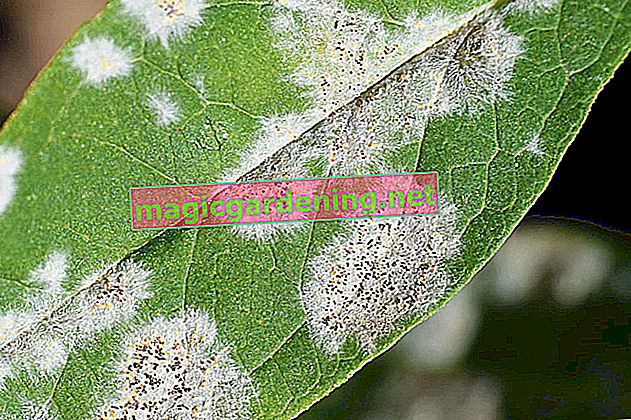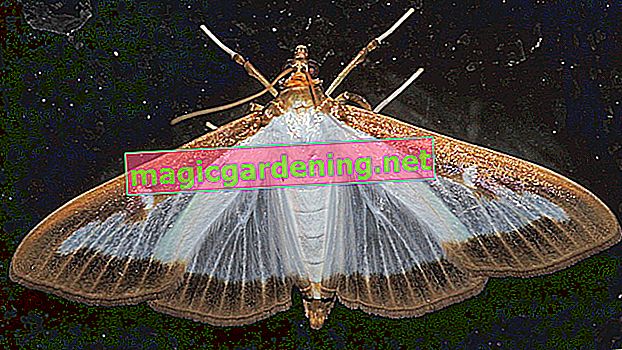
Small mushroom with great damage
The powdery mildew mushroom, also known under the scientific name Podosphaera leucotricha, is not unjustifiably feared by hobby gardeners. This is primarily due to the massive speed at which the fungus can spread on a tree or in the neighborhood after the initial infection. If there is an extensive spread of the fungal plexus on the leaves and shoot tips of the apple tree, this can sometimes lead to a total failure of the harvest or the entire tree.
also read
- Powdery mildew on parsley - recognize and prevent
- Identifying and combating powdery mildew on zucchini plants
- Recognize and fight pests on the apple tree
Recognize powdery mildew as a disease on the apple tree
Powdery mildew can be recognized by the following symptoms on the tree and on the fruits of the apple tree:
- from a floury topping on the branches
- through white, floury spots on the leaves
- with reticulated cracks in the color of the fruit
The first signs of a primary infection with powdery mildew can be seen on closer inspection with the winter pruning. The fungus that hibernates on the buds and shoot tips causes the scales of the buds to stick out a bit. Infested areas should always be cut into the wood as soon as possible and something should be removed from the tree. The cut material can be composted in your own garden without any problems. In spring, there are signs of powdery mildew with a floury coating on buds, young shoots and on the leaves. If left untreated, these spots spread rapidly in a very short time and gradually infest the whole tree.
Get to grips with the mildew fungus
The treatment of powdery mildew in the apple tree is basically possible with fungicides, but due to the high expenditure and the impairment of fruits and the garden with the fungicides, this is only a last resort to save the trees in the event of severe infestation. Much more central in private gardens are preventive measures and containment through a targeted cut. That is why you should regularly take a close look at your apple trees from the winter cut and cut out any infestation at an early stage.
Tips & Tricks
If the primary infection is cut out generously at an early stage, the secondary infection can spread far less rapidly during summer wind and rain phases.








